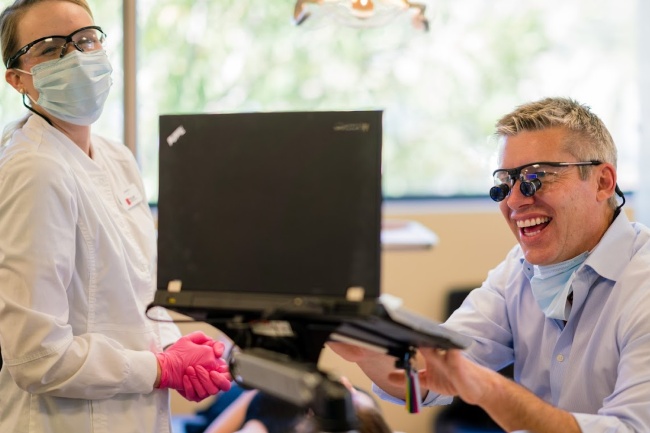Orthodontics has undergone a remarkable evolution—driven largely by technology. What was once a field reliant on physical molds, manual adjustments, and traditional braces has transformed into one filled with digital precision, faster treatment options, and improved comfort for patients. Whether you're considering orthodontic care for the first time or simply curious about how modern tools are shaping the experience, it’s clear that technology is now at the heart of effective, patient-centered care.
Digital Imaging — A Clearer View of Your Smile
The first step in any orthodontic journey begins with diagnosis. Traditionally, this meant bite impressions made from trays of putty, which were often uncomfortable and sometimes inaccurate. Today, digital imaging technologies have changed all of that. Intraoral scanners can quickly capture high-resolution, 3D images of your teeth and gums with far greater precision and comfort.
These scans allow orthodontists to analyze the alignment of your teeth, identify potential issues, and plan out your treatment more thoroughly. In Phoenix and Gilbert, many orthodontic practices now rely on digital scans not only to improve accuracy but also to create a more positive patient experience from the very start.
3D Printing — Speed and Customization
3D printing has become a powerful tool in modern orthodontics. Once a treatment plan is established using digital scans, 3D printers can create precise models of a patient’s teeth or fabricate custom orthodontic appliances directly.
For clear aligner systems or retainers, this means faster turnaround times and highly tailored results. 3D printing also improves quality control—each device is made to exact specifications, reducing the risk of errors that could prolong treatment.
CAD/CAM Technology — Better Appliances, Made Faster
Closely linked to 3D printing is CAD/CAM—computer-aided design and manufacturing. This technology allows orthodontists to digitally design aligners, retainers, and other appliances with a high degree of customization.
With CAD/CAM, the fit of each appliance is more accurate, leading to better results and greater comfort. For patients in places like Phoenix and its surrounding areas, this often means fewer adjustments, fewer visits, and a more seamless treatment experience overall.
Artificial Intelligence in Treatment Planning
AI is making waves in nearly every industry, and orthodontics is no exception. Advanced software powered by machine learning can now predict how teeth will move over time, helping orthodontists create more efficient and effective treatment plans.
AI tools can also detect patterns in imaging data that might be missed by the human eye, ensuring even minor issues are addressed early. This leads to more predictable outcomes and can even reduce treatment time in some cases.
Remote Monitoring and Virtual Check-Ins
Thanks to smartphones and cloud-based software, orthodontic care no longer requires constant in-person visits. Remote monitoring platforms allow patients to take progress photos at home and share them securely with their orthodontist.
This means fewer appointments while still maintaining a high level of care. It's particularly helpful for families with busy schedules or for patients in more rural areas of Arizona. It also allows orthodontists to make quick adjustments or provide advice between visits—keeping treatment on track without the need to rearrange your day.
Self-Ligating Brackets and More Comfortable Braces
Even traditional metal braces have seen improvements through technology. Self-ligating brackets, for example, use a built-in clip to hold the archwire in place rather than elastic ties. This reduces friction, shortens appointment times, and often makes the overall treatment more comfortable.
Advances in materials have also led to thinner wires and more discreet bracket options, all of which contribute to a less intrusive treatment process.
Clear Aligners and Smart Tracking
Clear aligners continue to gain popularity for their discreet appearance and removability. But it’s the technology behind them that really sets them apart. Modern clear aligner systems rely on precise digital planning and sometimes include built-in features like wear-time tracking.
This feedback helps ensure patients are wearing their aligners as prescribed, which directly impacts how effective treatment will be. These systems also offer treatment simulations so patients can see their future smile even before the first aligner is worn—creating a more motivating and personalized experience.
Tech Benefits for Teens, Kids, and Adults
Technology isn't just making things easier for orthodontists—it’s improving the experience for every patient demographic:
- Kids and Teens — Faster, less invasive diagnostic tools reduce anxiety and speed up appointments.
- Adults — Discreet options like clear aligners and shorter treatment times appeal to professionals and busy parents.
- All Patients — Better precision and comfort across all treatment options mean fewer surprises and more confidence in the process.
Looking Ahead — The Future of Orthodontics
As digital tools become more advanced, the possibilities for orthodontic treatment will only expand. Researchers are already exploring how augmented reality could help explain treatment plans or how genetic testing might one day predict tooth movement.
For patients in and around Phoenix, this means access to increasingly personalized, efficient, and convenient care options that weren’t possible just a decade ago.
Ready to experience the difference technology makes in orthodontic care? Team Orthodontics combines cutting-edge tools with compassionate expertise to guide you or your child toward a healthier, more confident smile. Schedule a consultation today to learn how modern treatment can work for you.
